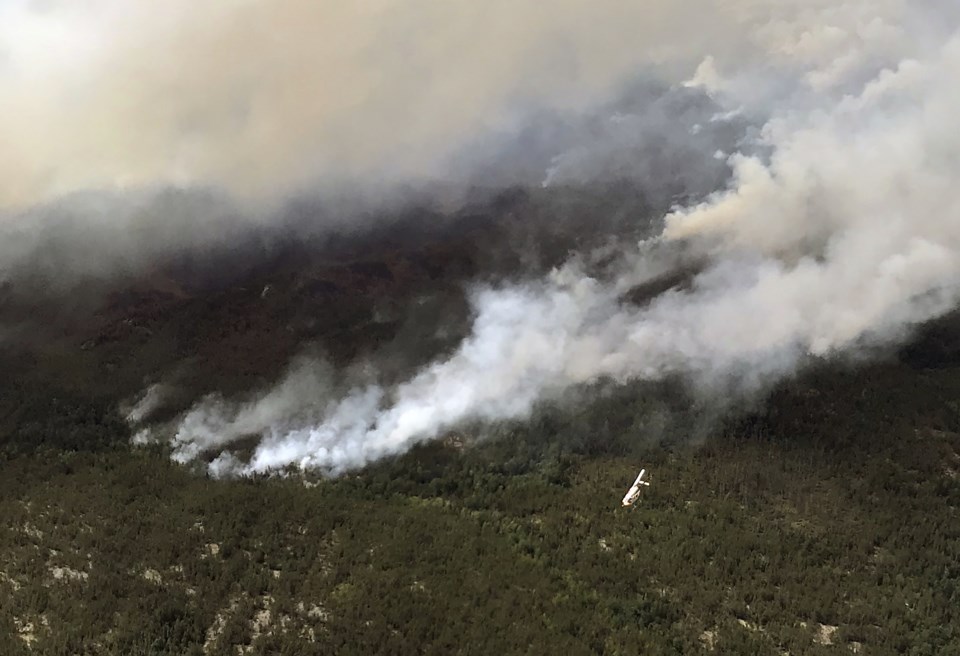The Northwestern Health Unit is looking into how climate change may affect health across the region.
The health unit last week released a detailed report on the health impacts of climate change across Northwestern Ontario. The report — Changing Climate and Health in Northern Ontario: An overview of the health impacts of climate change in northern Ontario — identifies several impacts including extreme temperatures, weather events, food and water shortages, and vector-borne diseases.
Alex Berry, the health unit's manager of foundational standards and communications, said the report outlines many factors that affect the health impacts of climate change in the north and offers suggestions to deal with those impacts.
“What we know is that climate change impacts people’s health in many ways and some of those are about some of the illness people will get, but also some of the living conditions that affect people’s health,” Berry said.
The report looks at the ways climate change will impact people’s health directly and indirectly.
The two largest economic industries in the north are mining and forestry. Extreme weather events can cause mines to nbe closed due to flood damage. Increased lightning events due to low-pressure systems are the leading cause of forest fires in the north, which can disrupt logging productions. In both cases, rural and remote communities might experience massive layoffs leading to people becoming food insecure or homeless.
These types of socioeconomic factors have a deep impact on a person’s health in many ways.
“Climate change connects to our health in so many ways because the environment connects to our health in so many ways,” Berry said.
For instance, wildfires produce gas, smoke, and ash which have potential impacts on respiratory health. Extreme flooding has a potential for blue-green algae formation which put clean drinking water sources at risk.
The report states that rural parts of the north are expected to experience a 2.5-degree rise in temperatures by 2050. The Ministry of Environment and Climate Change criteria for a heat warning in northern Ontario is 29 C. Anything above that temperature can pose a serious risk of heat exhaustion, heat stroke, heat cramps, dehydration and electrolyte disorders, cardiovascular and cerebrovascular diseases, respiratory disorders, acute renal failure, and neurological conditions.
Another example of climate change on public health is access to the far north remote communities. Most of these communities are isolated during the spring and summer. The ice roads during the winter month are used a majority of the time to bring in supplies. With the warm climate, these ice roads will not be stable enough for transport.
“So either those supplies are not available or they have to be flown in at a much higher cost,” Berry said.
Additionally, extreme heat events and flooding will further influence food insecurity in the region. Extreme droughts caused by high temperatures or ground saturation in cases of flooding will cause unpredictable growing seasons and food shortages.
“Some of what climate change will do is impact our economy and the standard of living we have in whether or not people will have jobs and enough money to buy food or pay rent. It also impacts our health through things like water quality and food quality and access to food," Berry said.
"There are these kinds of pieces we don’t think about. We think about severe weather events and we think about more forest fires and hotter weather and sometimes air quality, but we know that our ability to grow food in the north is changing."
As for vector-borne illnesses, the report states that Lyme disease has dramatically increased in the last 10 years as warm temperatures increase the maturation of black-legged ticks. Risk areas have expanded to many communities, leading Thunder Bay and Kenora to declare Lyme disease as endemic
Alternatively, Northern Ontario’s mosquito populations have the potential to increase due to stagnant pools of water caused by flooding. The report suggests that an increase in mosquitoes can lead to an increase in West Nile illness. Approximately one in 150 people infected with West Nile will develop life-threatening encephalitis, which is swelling of the brain, which is more common to people over the age of 50. Four per cent to 14 per cent of people die as a result of West Nile encephalitis; many others may experience long-lasting, debilitating problems ranging from memory loss to muscle weakness.
According to Berry, the Changing Climate and Health in Northern Ontario was produced as part of a project funded by Health Canada’s HealthADAPT Program that included all of the northern public health units in Ontario.
“What we are looking forward to doing is working with our partners, including policymakers, around having a better understanding of how far-reaching climate change is connected to our health and the health of our communities and that’s both physical health, as well as, economic health and livelihood,” said Berry.
They will use the report to inform internal climate change policies and share it with partners to support a coordinated approach to addressing the health impacts of climate change across the region.
